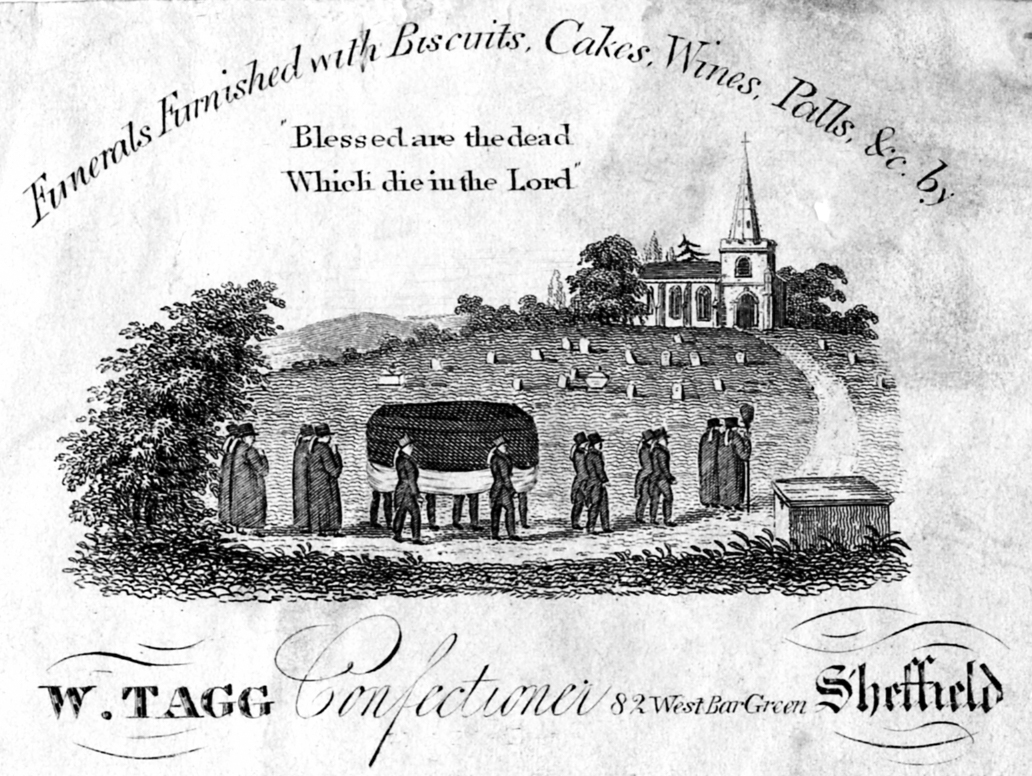
Funeral biscuit card, c1840. Source: Picture Sheffield,
Funeral biscuits were part of the ritual of a Victorian funeral, not made at home but by a specialist local confectioner, as this was considered a sign of status. The biscuits varied in size, shape and consistency but carried a message of mourning, honour and remembrance. There were regional and class variations with two types predominating. The upper classes favoured a savoy biscuit (a sponge finger biscuit) while the lower classes preferred a denser shortbread biscuit, often stamped with a graveyard symbol such as a cross, heart or cherub. Both types were flavoured with aromatic spices to help offset the less pleasant odours at a funeral. The biscuits were wrapped in paper in pairs, sealed with black wax and tied with a black ribbon. The more ornate wax seals may have depicted an hourglass, a skull, or a cherub flying towards heaven.
Commercial wrappers were produced, some being ornately printed with biblical quotes, poems and space for the name of the deceased. Other wrappers carried advertising offering the confectioner’s services as ‘funeral furnishers’ and on occasions, a business card was inserted with the biscuits.
Sometimes the biscuits were delivered to mourners in advance, acting as a death notice and invitation to the funeral. Some were given out when people went to the house to pay their respects. Other biscuits were presented on the day of the funeral by a young woman, often accompanied by a young man who would offer a sip of spirit from a cup. Other biscuits were handed out at the wake, to be opened and eaten at home, with the printed wrapper as a memento. For those unable to attend the funeral, a pair of biscuits could be delivered by a gentleman clothed in black, with black gloves and a top hat with black drapes, handing out the biscuits from a basket lined with a white cloth.
You can read more about people who worked as confectioners and who are buried in the Cemetery in the Sheffield General Cemetery Trust’s publication Sweet Remembrance and follow the self-guided trail Sweet Remembrance.



